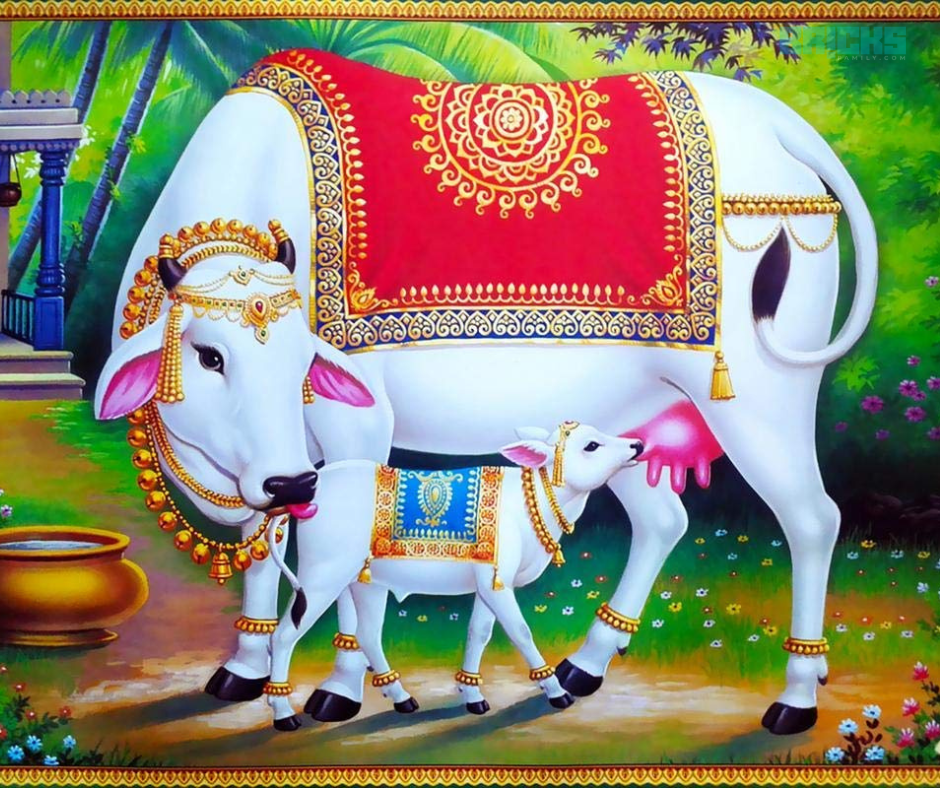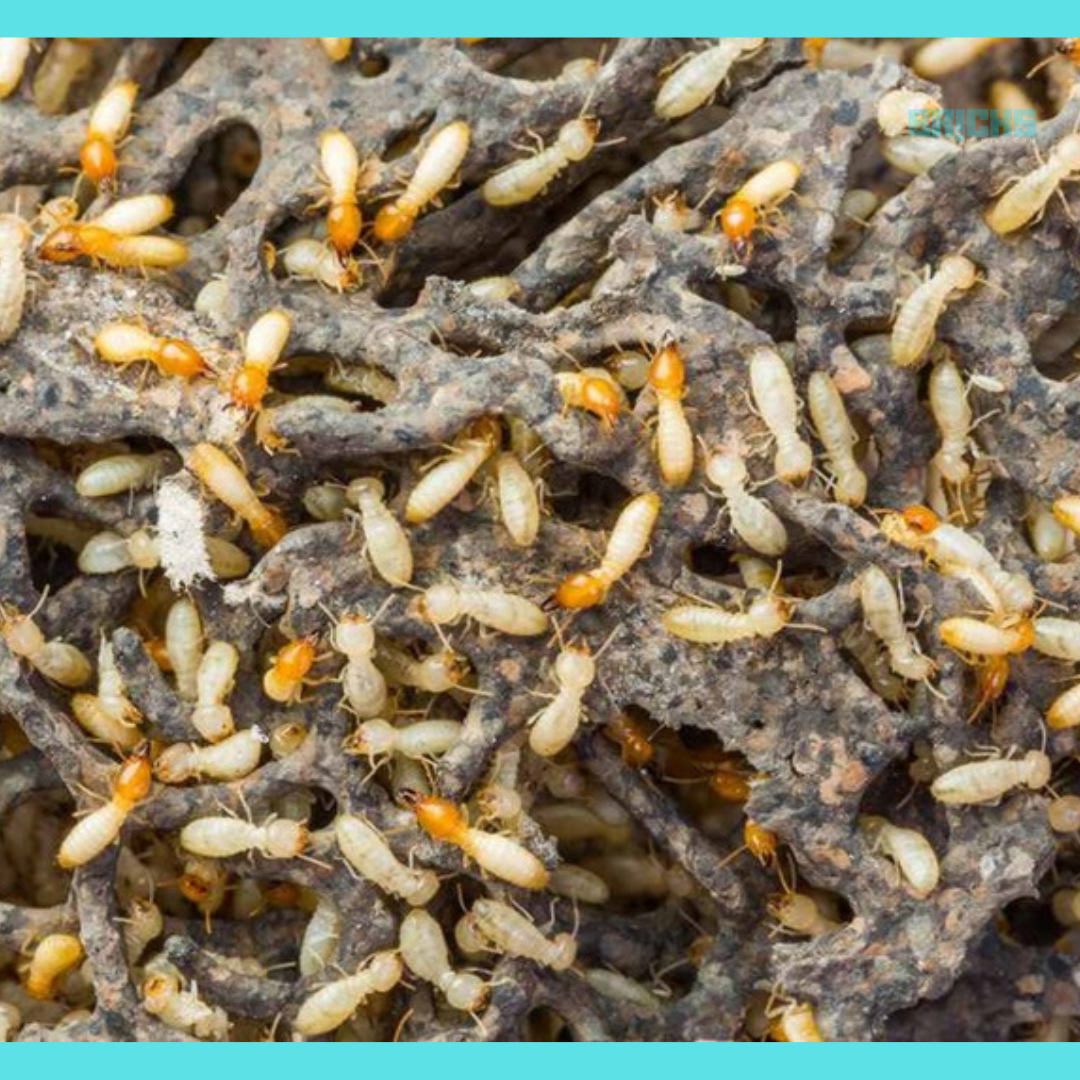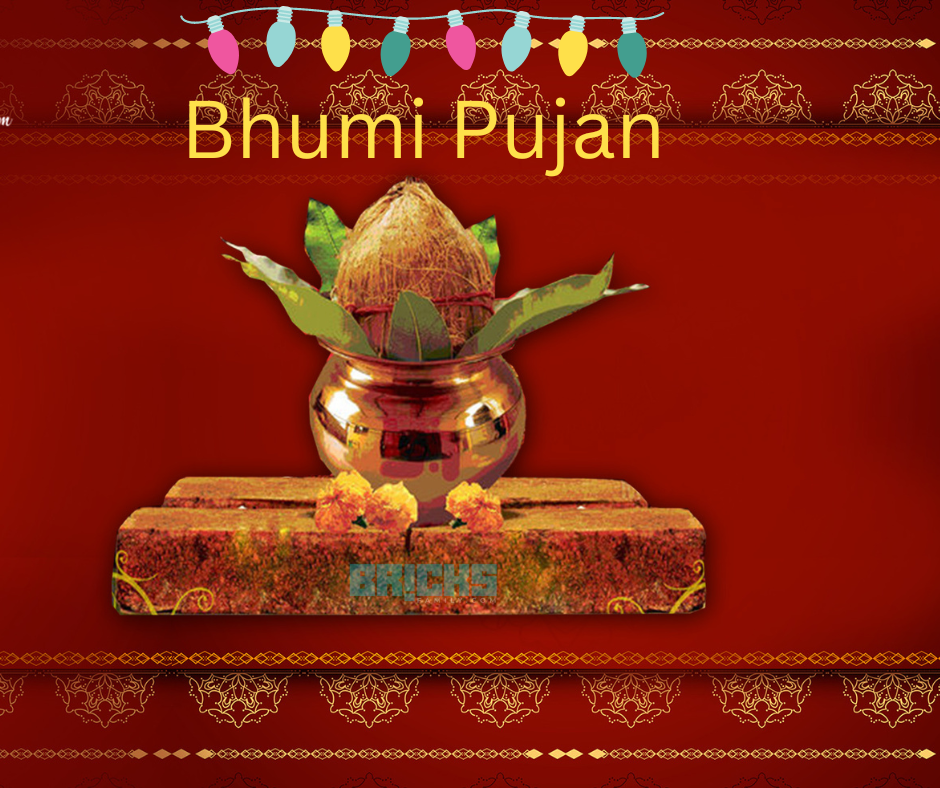Vastu Shastra draws much of its inspiration from Hindu scriptures, including the Vedas. Hindus revere various animals as Gods since they believe in the incarnation of God in these animals. The cow is considered the most revered of all animals by Hindus. This is why this cow-calf statue is a bright Vastu object found in nearly every Indian home. If you’re planning on installing the Kamadhenu bull and cow at home, it’s possible to do so. Let’s look at the Vastu Kamdhenu cow’s specifications without further delay. Here we will study the Significance of the Kamadhenu Cow and Calf Statue as per Vastu.
Vastu Kamdhenu Cow
As we have mentioned earlier, the cow, or Kamadhenu, as it is referred to, is considered to be the most sacred animal in Hindu tradition. Kamadhenu is a sacred cow that was originally from heaven. It was born from the ocean during the “churning” of the seas. According to Hindu scriptures, Kamadhenu will satisfy all your wishes. So, Vastu Shastra envisages keeping a Kamadhenu idol in your home to bring prosperity and happiness. The name is derived from Vastu Kamdhenu Cow, too.
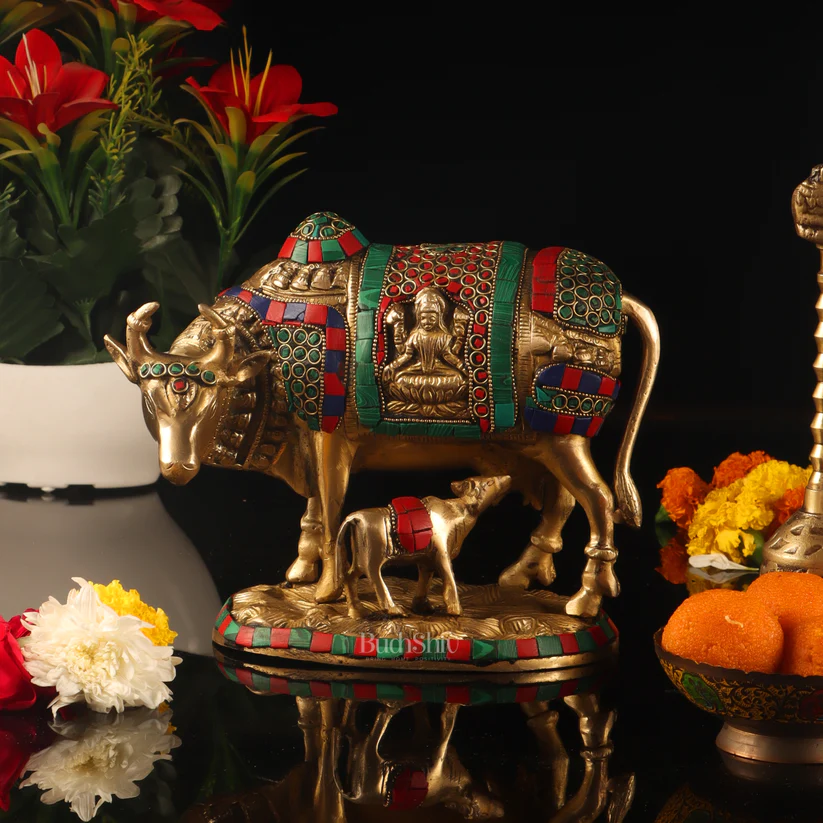
Kamadhenu and its Calf
The Vastu Kamdhenu Cow can be depicted with its young calf. In Hindu Scriptures, it’s typically depicted with the body of a cow and female heads with a variety of Gods inside her body.
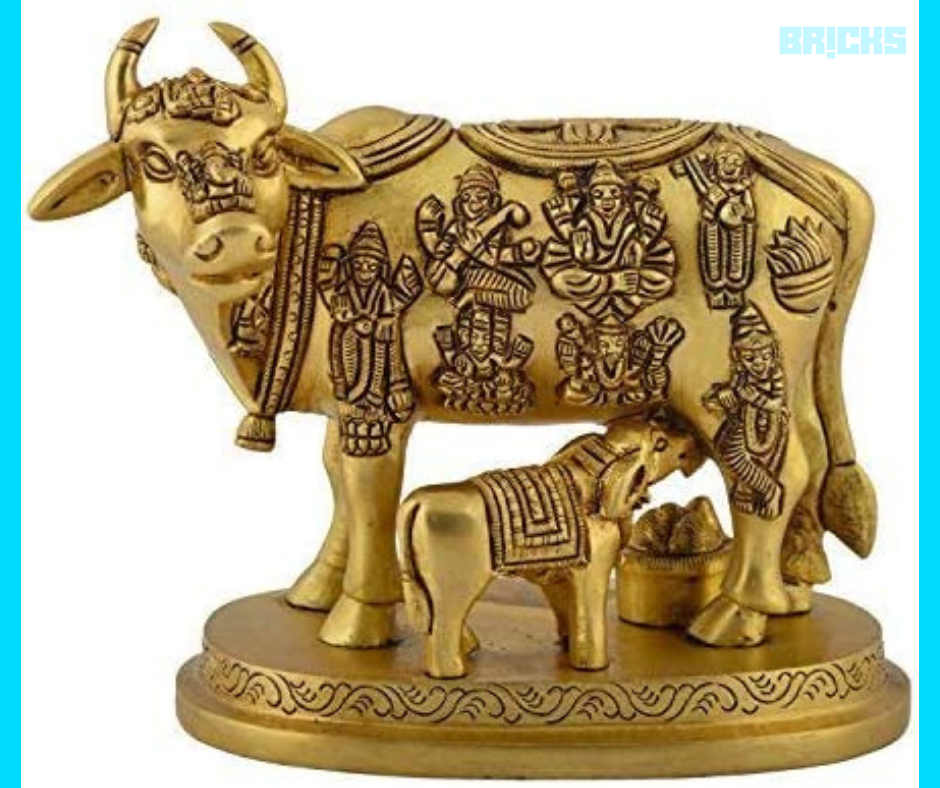
Significance of Different Parts of the Vastu Kamdhenu Cow
Various parts of Kamadhenu have their own significance, according to Vastu Shastra. Find out more about them by reading the points below:
- The four legs symbolize the four Vedas while also representing the Himalayas.
- Her horns signify the Holy Trinity, with Lord Brahma at the tip, Lord Vishnu at the center, and Lord Shiva at the base.
- The Sun and the Moon reside in her eyes.
- Agni, the Fire God, and Vayu, the Wind God, are shown on her shoulders.
All other significant deities reside in Kamadhenu’s physical structure.
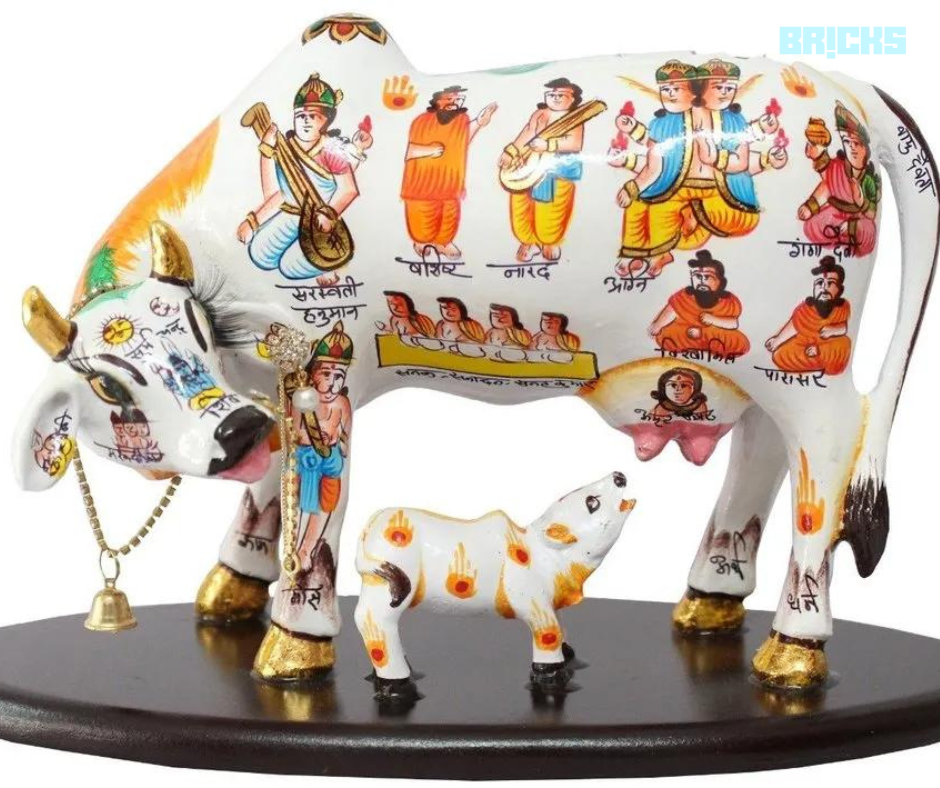
Surabhi – Another Name of the Vastu Kamdhenu Cow
Kamadhenu is also known by another name, Surabhi, which means scent. Hindus believe in her and pray for her blessings for their highest level of prosperity and happiness. Hindus are also drawn to the godly cow as an emblem of purity and fertility. So, Kamadhenu is usually depicted alongside her calves. Let’s take a look at the significance of the Kamadhenu Cow and Calf Statue as per Vastu.
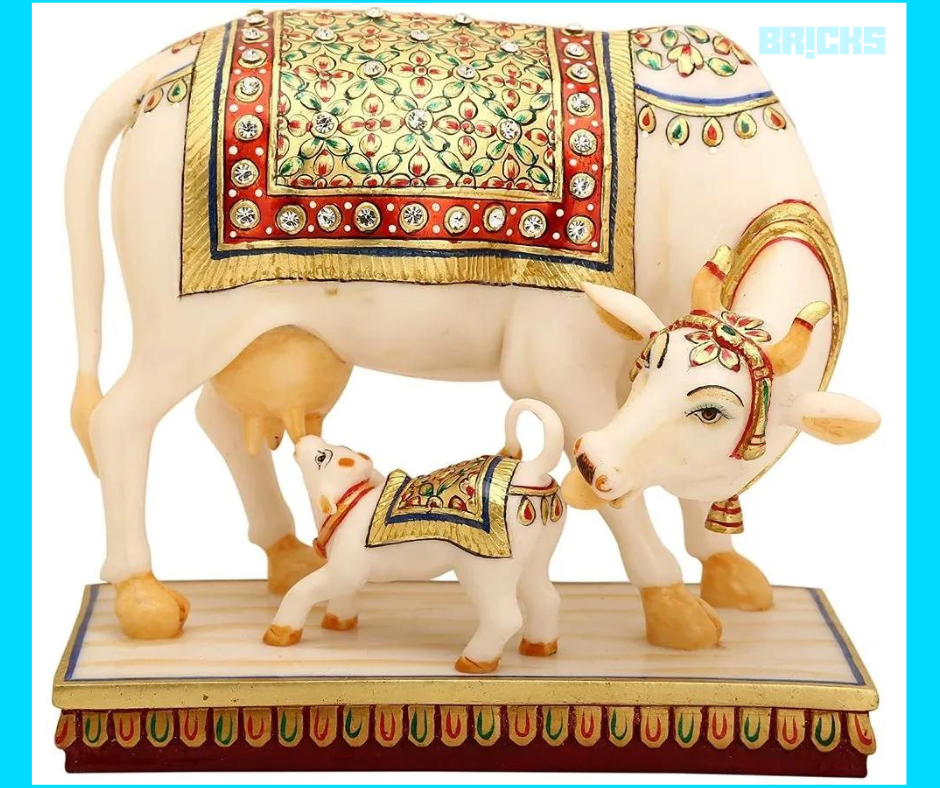
Cow and Calf Statue at Home Vastu Tips
Here is what you need to know about the Vastu Kamdhenu cow and calf statue placement at home.
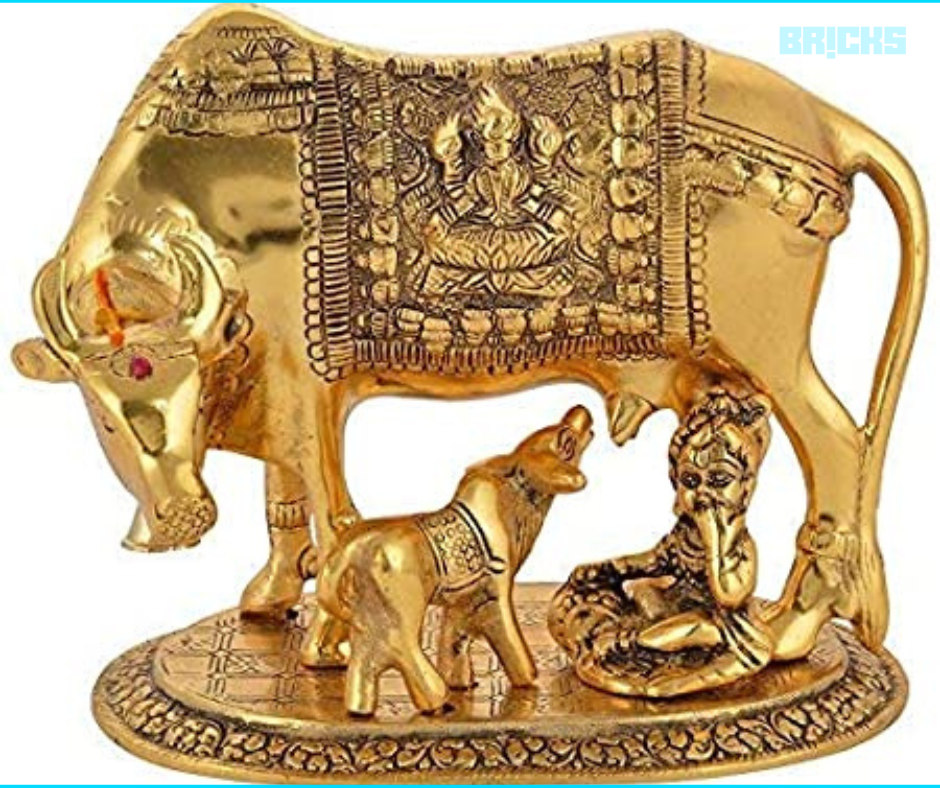
- People who find their life slow or dull should place the Vastu Kamdhenu cow in the Pooja room on a Friday.
- Businesspersons with more expenses than income can rectify their financial position by placing the statue in the southwest corner of the room every Monday.
- Other people with similar financial affairs (expenses > income) should try placing the Kamadhenu statue in the north corner of the room on Mondays.
- Kamadhenu is considered an all-purpose remedy if there is no peace or harmony in your home.
- A Kamadhenu cow and calf statue at home or office bring success, prosperity, and growth.
Kamdhenu Cow Vastu Benefits
Now that you know the Kamdhenu cow statue Vastu guidelines, let’s talk about the benefits.
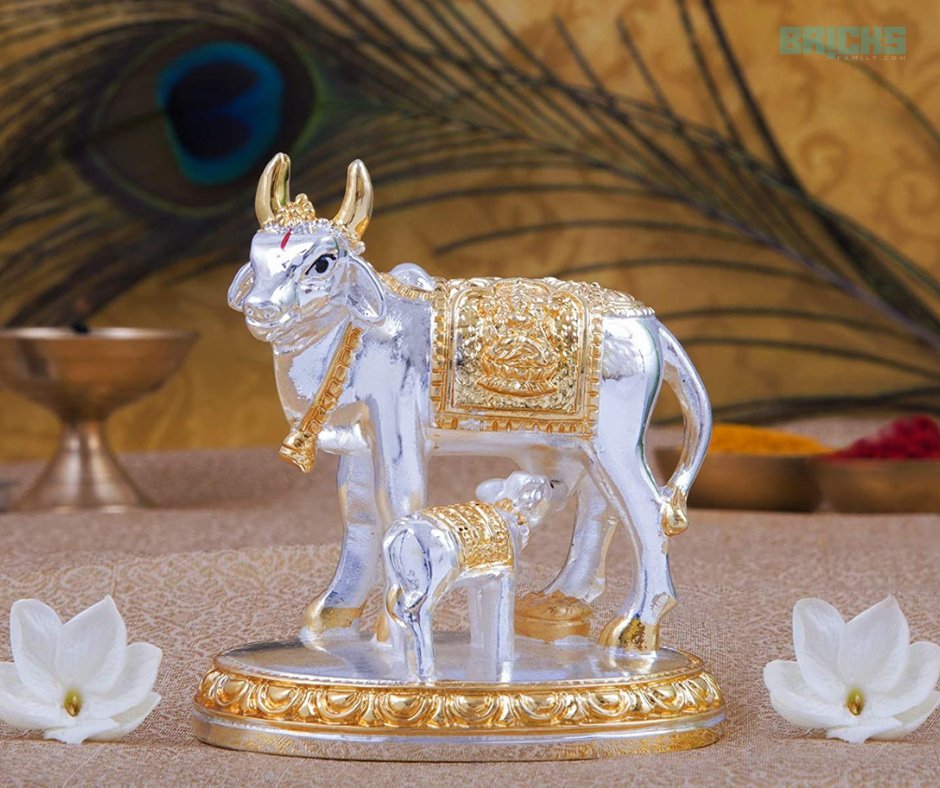
- Worshipping Kamadhenu with its calf, Nandhini, is auspicious. The person receives the blessings of the three prime goddesses, Lakshmi, Saraswathi, and Durga.
- Kamadhenu can fulfill all desires and bring peace and prosperity to your home.
- Kamadhenu can give professional, materialistic, and spiritual success by eliminating every problem from your life.
- Worshipping a Vastu Kamdhenu cow and calf statue benefits infertile females trying to conceive.
Wrapping Up: Vastu Kamdhenu Cow
Vastu Kamdhenu Cow tips could be beneficial if you follow them carefully. The specific directions and days are essential within Vastu Shastra. The correct method can direct positive energy in the right direction, providing the home’s residents with happiness and success.
Also Read: Important Tips: How to Construct a House With Vastu
Similar Topics: 15 Ways to Plan a Low Budget Single Floor House Design









